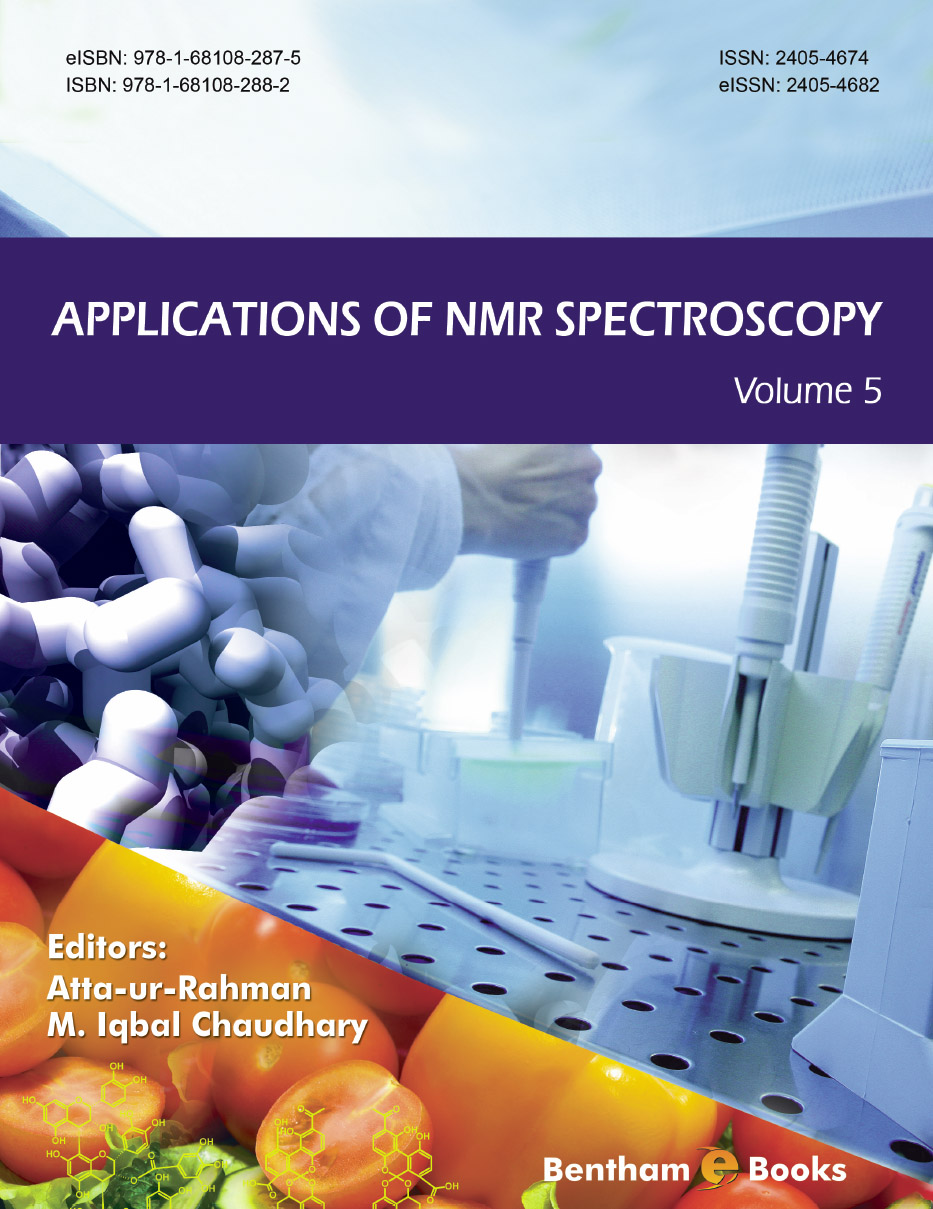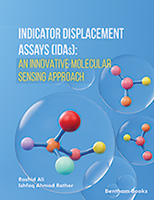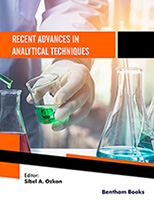Nuclear Magnetic Resonance (NMR) Spectroscopy is one of the most powerful analytical tools that probes the nature and properties of molecular structures. The NMR experiment provides tremendous information about the types and amount of atoms present in a sample, specific environments of atoms within a molecule, the purity and composition of a sample, and structural information about a molecule, including constitutional and conformational isomerisation. Certain characteristics of NMR spectroscopy make this the technique of choice for a wide range of research, analytical and medical applications. These characteristics include its capacity to analyse atoms, such as 1H, 2H, 13C, 11B, 15N, 19F, 31P and 195Pt, thus covering all major classes of chemical compounds, its non-destructive nature, the requirement of only a small quantity of material, and the ease of sample preparation in a whole range of solvents, as well as in the solid state and in living systems. Applications of NMR spectroscopy are spread over a wide range of disciplines, and the development of new NMR methods for various applications has had a profound impact on molecular research in general. New applications of NMR spectroscopy are being vigorously pursued in tandem for the development of newer hardware and software. This has created a need of a book series which reviews the most recent literature in this exciting field in terms of applications and developments. The 5th volume of the book series “Applications of NMR Spectroscopy”, comprises six reviews focussing on three broad fields of NMR applications, i.e. molecular identification of natural and synthetic compounds, medical diagnosis and food sciences. These reviews have been contributed by the leading practitioners in this field.
A number of bioactive peptides have been isolated from fermented and processed food. These peptides have immense physiological significance. The relationships between structural features and functional activities have been extensively studied. Many bioactive peptides of dietary origin possess relatively short peptide residue lengths and hydrophobic amino acid residues. The review contributed by Reddy et al., is an excellent overview of the applications of various NMR techniques in structural characterization of food derived bioactive peptides in their native state. The authors have discussed key structural differences between the food derived peptides and other classes of naturally occurring peptides, followed by a description of various NMR techniques, which are especially suited for their structural studies. In general, this review focuses on the application of NMR in food chemistry, taking examples of various classes of food derived peptides.
Tinnitus is the ringing or buzzing in the ears, caused by short-term exposure of high level sound. This common health issue is only poorly understood at the molecular level, and as a result, no successful treatment has been developed yet. Animal models of tinnitus have been developed to study the complex changes which may occur in the central nervous system in tinnitus conditions. This may involve changes in the regulation of neurotransmitters, such as gamma-aminobutyric acid (GABA), glutamic acid (Glu), acetylcholine (Cho), etc. Brozoski et al., have reviewed the application of a variant of NMR, high resolution proton magnetic resonance spectroscopy (1H-MRS) to record the brain spectra of tinnitus model animals in order to determine the GABA, Glu and Cho concentrations. This review therefore demonstrates the power of 1H-MRS in direct determination of biomarkers in animal models for a better understanding of the chemical changes in this complex disorder. 1H-MRS has thus been demonstrated to be an excellent technique for the study of the biochemical composition in living systems, including living cells.
Dibyendu S. Bag focuses on the applications of NMR spectroscopy in the characterization of polymers, their monomers and copolymers. The NMR spectra of polymers are generally broad and featureless due to large molecular sizes and serious overlapping of signals. The solubility of large polymers in deuterated solvents is also an issue. Solid state NMR spectroscopy provides a viable alternative, but it has its own limitations. This review highlights recent applications of various NMR techniques in the identification of monomers, their corresponding polymers and co-polymers. The author has also discussed the NMR based characterization of polymers containing nanomaterials, such as fullerene and carbon nanotubes.
The review by Voronov and Ushakov focuses on the application of NMR spectroscopy in the study of structures and intermolecular dynamics of paramagnetic molecules, particularly the large proteins. Paramagnetism arises due to the presence of unpaired electrons in a molecular system. These unpaired electrons influence nuclear spins in biological molecules, and the resultant forces affect the NMR spectra in the solid state. Paramagnetism can thus provide long-range information about the structural and dynamic characterization of biomolecules and their intermolecular interactions. The review explains in great detail the NMR phenomena in paramagnetic systems, followed by a discussion of an NMR method especially suited for the study of structure and dynamics of complex molecular systems. This is very useful for researchers who wish to apply NMR in the structural biology of multi-electron protein and other such biomolecules.
The application of Magnetic Resonance Spectroscopy (MRS) as a powerful disease diagnostic and grading tool for non-invasive measurement of metabolites is further presented in the review by Stecco et al. The authors have focussed on two types of NMR based techniques i.e. multivoxel and single voxel acquisitions, used for the diagnosis and grading of brain gliomas based on the analysis of biomarkers and metabolites. They have explained the strengths of the two brain NMR spectroscopy techniques as non-invasive tools, and related the levels of various metabolite ratios with the stages/grades of glioblastomas. The brain NMR spectroscopy can be used for the determination of the effect of chemotherapy, as well as to identify the sub-types of the cancer.
Tischer and Mali have contributed an article focussing on the development of cross polarization-magic angle (13C CP-MAS) solid state NMR spectroscopic technique as a robust tool for the characterization of proteins, lipids and starch in complex food matrices, and other samples of biopolymers. Solid state NMR spectroscopy has many advantages, including being operationally less expensive, versatile, reproducible, quick, and capable of analysing samples in the native state, without multi-step sample preparation needed for liquid state NMR. The authors have exhaustively reviewed the most recent developments in the field of CP-MAS NMR spectroscopy, including hardware and software developments. They discuss various NMR parameters which influence the outcome of CP-MAS NMR based analysis of a variety of food constituents. Such analysis of food for their key ingredients can help in improving the organoleptic and taste properties of food preparations and raw material.
We wish to express our gratitude to the authors of the above cited articles for their excellent scholarly contributions for the 5th volume of this well-known series. We also greatly appreciate the efforts of the entire team of Bentham Science Publishers for efficient processing and timely management of the publication. The efforts of Ms Fariya Zulfiqar (Assistant Manager Publications) and Mr. Shehzad Naqvi (Senior Manager Publications) and leadership of Mr. Mahmood Alam (Director Publications) are especially praiseworthy. We also hope that like the previous volumes of this internationally recognized book series, the current compilation will also receive wide readership and appreciation.
Atta-ur-Rahman, FRS
Honorary Life Fellow
Kings College
University of Cambridge
UK
M. Iqbal Choudhary
H.E.J. Research Institute of Chemistry
International Center for Chemical and Biological Sciences
University of Karachi
Pakistan





